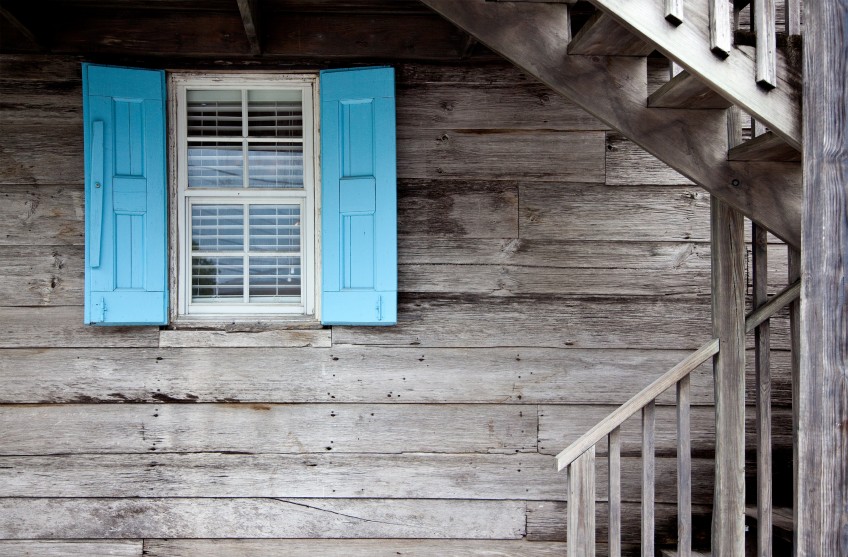Introduction
Caulking and weatherstripping your windows and doors is a perfect example of a task that serves a dual purpose of both maintenance and energy conservation. Good caulking prevents water and/or pests from entering around windows, doors, sinks, faucets and toilets. It also keeps air from passing in and out of your home around windows and doors, which greatly improves energy efficiency and comfort.
Step by step
An annual inspection should be completed of all areas. Expect windows and doors to need exterior caulking 1 year after construction and roughly every 5 years afterward. We suggest inspecting caulking and weather-stripping each time you wash your windows as settling or dryness can lead to more frequent caulk maintenance.
Do not caulk your home’s exterior during cold weather (under 45 degrees Fahrenheit) or during very damp or rainy periods. Ensure that the caulk will have at least 24 hours to dry before any rain or else you may find yourself redoing the entire project!
Below is a video for Dummies (hey, we didn’t make it) about how to caulk a window.
Exterior Windows & Doors
- Inspect the Caulk
Get your ladder and other recommended tools ready.
Now work on identifying what caulk needs to be replaced. Look for cracks and splits. Also use your fingers to feel if the caulk is pliable or hard and brittle. Take care not to damage good caulk while inspecting it. If it is in good shape, leave well enough alone!
This task is a good one to complete when you’re washing your windows. - Remove the Old Caulk
Start by removing the old caulk if it damaged. This is best accomplished with a putty knife or utility knife. Always be careful when cutting with a utility knife and make sure that cutting strokes are made away from you. Use your wire brush to clean out small remnants of old caulk and finish up with a handheld brush and rag to thoroughly clean the area. Make sure it is dry before applying new caulk. - Apply New Caulk
Be sure to use a good quality caulks. We recommend clear silicone based exterior caulk for most applications. Silicone based caulk expands and contracts better than acrylic based caulks, leading to longer life and durability. Note that silicon caulk cannotbe painted so consider using a silicon/latex hybrid caulk if you need to paint it. Expect to use about ½ tube per window or door. A good quality exterior caulk is suggested in the materials section.
Note: Exterior and interior caulks are designed differently. Exterior also tends to have a strong smell due to off-gassing so only use exterior caulk outside and interior caulk inside.
Load up the caulk tube in your caulk gun. Cut the tip at an angle, starting with a small whole and only increasing it if needed. Less is more! You’ll also need to pierce the inner seal inside the caulk tube using a nail, stiff wire, or the probe on your caulk gun.
Ensuring the area is clean and dry, run a steady bead of caulk along the seam by applying steady pressure on the caulk gun’s handle while moving it along in a smooth, single motion. Some prefer to push the gun away from them while others pull it toward them. As long as you’re getting good coverage either method works.
Regardless of how good you are with a caulk gun, you’ll need to smooth out the caulk. While there are special tools for this, few are better than your own finger. Run your finger down the seam to press and smooth the caulk. You might also try using a craft stick or paint stirrer that has been trimmed to the width you’re working with. Remember what we said about less is more? Wipe any excess on a rag. - Repeat for all Window Exteriors
Check and correct all your windows and doors from the outside. Good? All right, let’s go look at the inside.
Interior Caulking & Weatherstripping
Interior windows usually only need to be caulked when there are air leaks. It generally lasts longer than exterior caulk due to more consistent temperatures and less exposure to sun.
Latex (also called acrylic) caulks work best for interior applications. While less durable than the silicone caulk we used on the exterior, latex doesn’t have a strong smell and is easily painted. You can also find pre-tinted latex caulks to match your existing paint. A recommended interior caulk is listed in the material’s section as well.
- Test for Air Leaks
First, let’s test for air leaks using an incense stick. Start by closing all the windows, doors, and fireplace flues tightly and turning on your kitchen and bath exhaust fans. This will cause the home to draw a slight negative pressure in relation to the exterior and draw outside air in through any leaks.
Now use a lit incense stick to pass slowly around the perimeter of all windows, doors, and exterior penetrations. These areas might include pipes, electrical wires, air conditioning lines, or dryer ducts. If an area is leaking you’ll see the smoke get pulled inward. Mark these areas with a post-it note.
Check all your windows, doors and exterior penetrations in this manner. - Check & Repair Weather-stripping
For any doors or windows that were leaking, first check the weather-stripping. Old weather-stripping will be dry, brittle, and broken.
Apply new adhesive foam weather-stripping by first removing the old, damaged weather-stripping, wiping the area clean, and applying new. For window and door sashes with minor gaps, use an adhesive foam tape. For larger gaps, perhaps along the edges of a door, use a wider brush or rubber strip to close the gap. - Check & Repair Caulking
Once the weather-stripping has been inspected and replaced, take a look at the caulking around the window and doorjambs or wall and ceiling penetrations. If there are noticeable gaps and cracks, use a utility knife to remove the old caulk and a cloth to clean the area.
Now lay a new bead of caulk on the corner, and smooth over with your finger. Use a damp sponge or cloth to wipe up excess. Done!
Repeat for any areas that appear to have leaks. If you’d like, you can retest with your incense smoke and should see a noticeable improvement. - Mark Complete!
A big job, but remember that it doesn’t need to be done every year. Just keep up with annual inspections and replace as needed, where needed.




